

| mathematical shenanigans 
(extended) phonetic alphabet | 
fitch style notation for katex | 
many-valued logic playground | 
miscellaneous | 
unicode
| |
discrete sets, sets with discrete closure, and discontinuities
june 19th, 2023i noticed discontinuities in functions are much more well-behaved when they form discrete sets, especially sets with discrete closure. a set is called discrete if all of its elements are isolated : S is discrete if, for all x ∈ S, there exists ε > 0 such that B(x, ε) ∩ S = {x}. if a set S has a discrete closure set, that means that its intersection with any bounded set is finite. here are two instances i came across where these sets made my life easier to study discontinuity-related questions.
when it comes to so-called "counting functions", discontinuities arise when there are things that are being counted some way or another, like their norm or something. that's mostly a number theory thing but it also arised in my research on lattice groups. usually, we want counting functions to have their coset be ℕ (with the min(ℕ) = 0 convention
proof. i used a proof by negation for this (the constructively valid version of proofs by contradiction, since it simply uses the definition of negation as ¬p:≡[p⇒⊥]) ; we'll assume that there exists a cluster point ℓ in cl(S). then, there exists (ai)i∈ℕ∈Sℕ that converges to ℓ, while never reaching it. since the sequence is real-valued and converges, it is a cauchy sequence, and never reaches ℓ so we can build a strictly increasing (extractive) function φ : ℕ → ℕ such that (|aφ(i)-ℓ|)i∈ℕ is strctly discreasing. without loss of generality, we'll assume (aφ(i))i∈ℕ to be strictly monotonous, let's say increasing since a similar reasoning applies to when it's decreasing. then, since im(f)=ℕ, that f is increasing, and that S is the set of its discontinuities, then for all ε>0 and x∈S, we have f(x−ε)+1≤f(x) or f(x)+1≤f(x+ε), or both tbh. therefore, we can inductively conclude that f(aφ(n))≥f(aφ(0))+n→+∞, so (f(aφ(n)))i∈ℕ diverges to +∞, which implies f is undefined over [ℓ,+∞). by contradiction/negation, S can't have any cluster point, which concludes the proof. here's a loose visualisation of the proof.
another odd place where such sets become life-saving is when it comes to find minimal conditions for the integrability of functions of alternating sign : let ε>0, large enough A>0 and ω>0, and f : Ω⊇(A,+∞) → ℝ a function such that |f(x)| ≤ 1/xε for all x>A, then it's integrable whenever it changes sign at least once but a finite number of times over all ω-long interval ⊆ (A,+∞)... which implies sgn(f)'s set of discontinuities has discrete closure. although it's not a direct equivalence, but that's a property that will come in handy when we get to the proof itself !
proof. by chasles's rule, if ∫
|
|